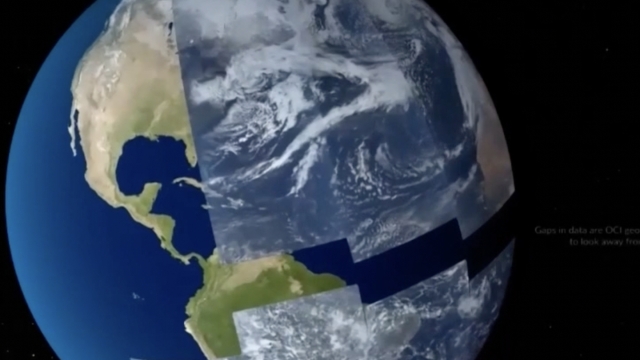We know NASA mostly for launching rockets and humans into outer space, but for about 60 years the National Aeronautics and Space Administration has also played a vital role in understanding the spaceship humans call home-planet Earth.
Data from NASA's newest Earth-observing satellite will provide insight into ocean health, air quality, and the effects of a changing climate.
In the lead-up to Earth Day, which falls on April 22, NASA officials in Washington on Friday documented how climate change is affecting the planet, this time using data from a program that watches for changes in the ocean and the air from space. Earth Day draws attention to negative effects human activity has on the environment and asks people to focus on things they can do to better care for the planet.
"That is our home, our planet. It's the only planet we have and we want to keep it," said NASA Administrator Bill Nelson.
Nelson, along with two officials from NASA's Earth Science division, showed some of the first pictures from the agency's PACE satellite. PACE stands for plankton, aerosol, cloud and ocean ecosystem. The instrument records data from all of the elements that make up the acronym to offer information on how humanity is affecting Earth's climate.
Nelson, a former astronaut and a U.S. senator serving Florida, added his time viewing the blue planet from space above made him become "more of an environmentalist when I went into space."
According to NASA, the PACE satellite is located about 250 miles above Earth and was launched into orbit back in February. "We have an unprecedented view of the Earth," said Tom Wagner, associate director of earth action for the Earth Science Division at NASA.
Instruments on board will "collect data to help researchers better understand how the ocean and atmosphere exchange carbon dioxide, measure atmospheric variables associated with air quality and climate, and monitor ocean health by studying phytoplankton — tiny plants and algae."
Climate change is affecting Earth's oceans in many ways — from sea level rise to marine heat waves to a loss of biodiversity. NASA says PACE allows researchers to study those effects on phytoplankton, which play a key role in the global carbon cycle by absorbing carbon dioxide from the atmosphere and converting it into their cellular material. The tiny organisms are the base of larger aquatic and global ecosystems. "Some of the tiniest things that have the greatest impact," said Karen St. Germain, the director of NASA Earth Science.
Research has connected human activity, like industrial scale farming, to algae blooms. Where the Mississippi empties into the Gulf of Mexico, run-off from silt laden with phosphorous substrates from plant fertilizers causes areas to bloom full of algae, but the effect is that hyper-blooms eat up oxygen in the water, causing what oceanographers call "dead zones," areas in which fish and other wildlife can't exist.
PACE can observe the effects wildfire and pollutants that make up particulate matter and aerosols have on the climate. It also looks at key variables in cloud formation and can examine how the ocean affects topography.
NASA says the observations improve monitoring of ocean health, air quality, and climate change."That's why we are trying to offer NASA's expertise and the other agencies of the federal government to give us the information that we need in order so that we can be better stewards of what we have," Nelson said.
PACE data is open to scientists around the world to research, and perhaps better understand humanity's impact on Earth.
SEE MORE: Climate change could depress global income by almost 20%, study shows
Trending stories at Scrippsnews.com



